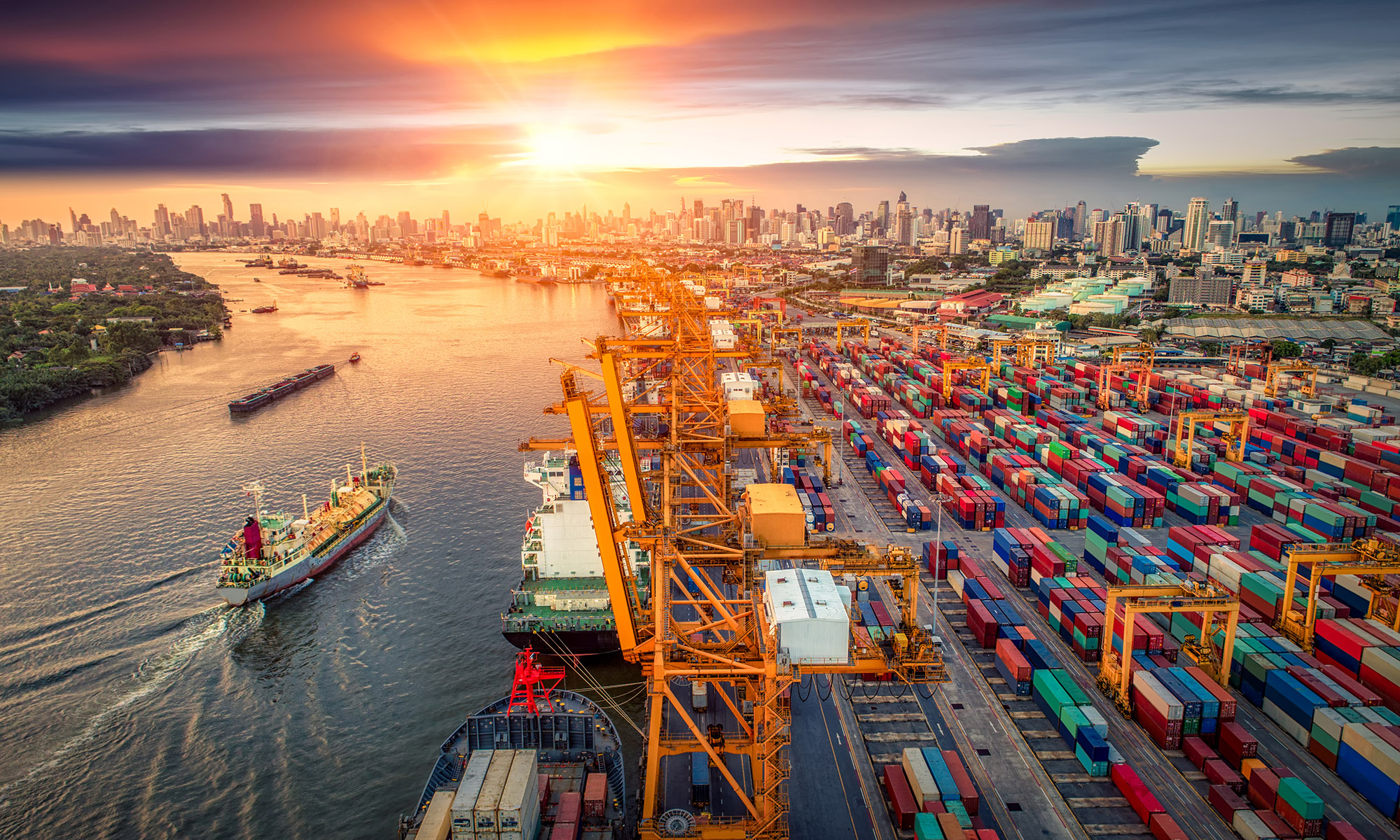December 16, 2021
Inflation and Supply-Chain Challenges Increase Trade Credit Risks
Bryan Mason, editorial associate
Trying to make sound credit decisions amid a surplus of supply-chain issues is challenging. Ongoing supply-chain challenges have led to higher levels of inflation, increased commodity prices and downstream credit risks, said Jay Tenney, managing director at Trade Risk Group (Irving, TX), during FCIB’s recent Global Expert Briefing.
With inflation and the supply-chain bottlenecks intermingled, the inability to meet high demand has inevitably led to price increases, which have pushed up inflation levels, Tenney said. “This all needs to be at the forefront of your credit analysis by considering how these downstream credit risks are going to affect you. [Creditors] have never had to look at supply-chain issues this closely.”
Risks vary by industry and region. For example, the chemical industry is experiencing lower demand, but should normalize by mid-2022, as the automotive industry is expected to take longer to recover, Tenney said. The shortage of materials also has led automakers to accept lower-grade products, he continued.
In China, production halts every time a case of Covid occurs due to its zero-Covid policy. Additionally, the country has been impacted by severe flooding, Tenney said. “This is a problem because it is a unique experience.”
Tenney recommends analyzing customers through the products they wish to acquire for downstream use. Selling to companies that supply necessary goods or services will likely be better credit risks than companies that sell nonessential goods or services.
When considering material shortages, consider whether your product is one of several inputs that comprise a customer’s end product, Tenney said. If a customer cannot acquire all of the components it needs to build its product, then it cannot sell that product down the line, increasing the chances of not getting paid, Tenney explained.
And, how are bottlenecks affecting your customers? Transportation delays mean your customer might not get its products out on a timely basis, further affecting its ability to pay you, Tenney said. So, creditors should factor this into their risk assessments.
As commodity prices fluctuate, risks may increase when selling products that change in value before you receive full payment. “Price increases or decreases are not necessarily bad, but the speed of the change is,” Tenney said. “We have seen a lot of companies get in trouble lately if they did not have automatic inflation escalators built into their contracts with their customers. If the customer is locked into buying steel at X number of dollars [and it becomes unaffordable due to price escalations], the customer will have to default on the order or the seller will end up eating the loss.”
To combat this, Tenney recommends changing terms with your customer. “Offer higher credit lines with longer terms, but charge them for it,” he said. “Charge the standard interest rate plus an additional two to three percent for managing and carrying risks.”
That way sellers can provide the much-needed product to their customers, but also establish a positive working relationship that can potentially translate to long-term partnerships, Tenney said. Just be sure to work with higher-ups to see what credit lines and terms you can offer, and keep communication lines open with customers.
Fate of the Supply Chain in 2022 Remains Unknown
Annacaroline Caruso, editorial associate
The supply chain will either rise above the pressure in 2022, or crumble further. With supply-related threats expected to become more frequent and complex next year, businesses will need to actively work toward supply resilience in order to avoid more problems, says a recent BSI Group report.
“Because of this unprecedented moment, the supply chain is about to have a make-or-break year and needs to be right at the top of the C-suite agenda,” said Susan Taylor Martin, chief executive of BSI, in a statement. “It’s clear that the importance of supply chains will only increase as we head into 2022, and the steps organizations take now will ultimately determine their success or failure.”
The report highlights three major risks: crime, climate and convergence. These are in addition to the other existing issues weighing on the supply chain, like labor shortages, outdated technology and booming demand.
Supply-chain related crime is on the rise. Criminals have targeted weak spots in the supply chain and BSI said they will continue getting more creative in 2022. Cargo theft from trucks and warehouses are becoming more common, along with selling counterfeit products and posing as trustworthy suppliers.
“I’m seeing a significant number of false suppliers acting as genuine potential suppliers in supply-chain logistics provision—warehousing distribution, distribution centers, transportation companies—and actually, they are criminal groups trying to infiltrate the logistics supply chain,” wrote David Fairnie, BSI’s principal consultant of supply chain security, in the report. “So, arguably today more than ever, you do need to know your suppliers.”
Climate change also is on track to create more challenges for the supply chain as time goes on. Natural disasters are becoming more frequent each year, making the supply chain even more susceptible to increased shipping delays and volatility, BSI said. “If you’re a bank or an insurer involved in a building project that you anticipate will be in use for the next 50 years, how do you know it’s not going to be underwater in five years? Or how can you guarantee that you’ll be growing coffee in Guatemala in 10 years,” the report reads.
When several of these risks converge, the supply chain is no match. However, some of these issues can be kept at bay with collaboration and preparation, BSI said. “There needs to be working groups within organizations that understand these overarching supply-chain challenges and bring all the different experts together to resolve them,” suggested Jim Yarbrough, director of global intelligence at BSI in the report.
More companies also are turning to automation as we head into the new year with the hope of building supply-chain resilience and improving visibility. According to The State of Ocean Freight Operations report conducted by the Shipping and Freight Resource, of 160 participants in the global shipping industry, 42% are looking to upgrade their systems with further digitalization. And 92% are unhappy with their current freight operation systems.
“With each disruption it becomes increasingly apparent that the industry-standard processes are manual, dated and tremendously inefficient,” the report reads.
A few sessions at NACM’s 2022 Credit Congress in Louisville, KY, will cover supply chains and best practices for communicating supply-chain backlogs to your customers. Be sure to register by the end of this month to take advantage of the early bird pricing.
Use Lien Waivers Wisely
Bryan Mason, editorial associate
Waiving lien rights on a property during the course of a project might be common, but suppliers and subcontractors must pay close attention to the language in their lien waivers to remain protected against nonpayment—especially when waiving lien rights in connection with partial payments. Before signing a lien waiver after receiving a partial payment, make sure you are only waiving your rights for the work covered by that payment.
“Some lien waiver forms are one-page documents and relatively easy to interpret,” said Chris Ring, of NACM’s Secured Transaction Services (STS). “Some lien waiver forms are multi-page documents full of legalese that attempt to change a contractual relationship such as change of venue, indemnification and the addition of liquidated damages. The battle of the forms must be considered when signing any document that is full of legalese, and you may need to consult legal counsel before signing.”
Whenever possible, use your own lien waiver document. “Drafting your own partial lien waiver and final lien waiver form is important,” said Kevin Laurilliard, shareholder at O’Connell Aronowitz, P.C. (Albany, NY). “This can help subcontractors and suppliers remain protected by controlling the terms and the extent of their waivers and releases.”
Connie Baker, CBA, director of operations for NACM Secured Transaction Services, agreed. “Using your own waiver is the best way to protect your rights.” However, “Owners or general contractors typically create their own waiver and try to make you sign it because they have the financial advantage in the relationship,” Laurilliard said.
“General contractor waivers are normally developed to protect themselves. It is so important to read them and to always strike harmful language,” Baker said.
Large contractors may include language that can increase risks to subs and suppliers. For example, watch out for language that waives your right to any and all claims thereafter or that releases the contractor from all liabilities. Make sure you only waive rights for work completed up to the effective date of the waiver and not for future work or any pending claims that need to be preserved, Laurilliard said.
Ten states have statutes that dictate waiver language. For example, Florida provides statutory lien waiver forms, but it allows contractual parties to use a different form, but you cannot release lien rights for unpaid work, said Tim Moorhead, attorney at Wright, Fulford, Moorhead & Brown, P.A. (Altamonte Springs, FL). Additionally, some states, like New York, make contract language that seeks to limit a party’s right to file a mechanic’s lien legally unenforceable. But after the initial contract, a partial lien waiver can waive your right to file a mechanic’s lien for work in the future, so that language should be struck from the waiver, Laurilliard said.
Another best practice is the use of conditional waivers. “Conditional means you have not received payment yet, but will give up your rights when payment is received,” Baker said. “You should always make sure it is based on the clearance of funds from the bank. If this language is not in the waiver, add it, then initial and date your additional language.”
Conditional waivers can release lien rights upon final payment or provide a partial release of rights that correspond with progress payments. Conditional waivers allow subs and suppliers to release their rights only when certain requirements are met, such as:
- Receiving a check for a specific amount.
- Receiving a check within a specific time period.
- The check clearing the bank.
- The debtor not filing bankruptcy within 90 days of receipt of payment.
Unconditional waivers may be used for either final payments or to correspond with progress payments as well, but they should only be signed once payment is received and has cleared the bank, Baker said.
In a recent Law Office of John Caravella, P.C., blog post, construction attorney, John Caravella, also suggests ensuring the waiver only applies to lien rights and is related to payment, not performance.
Wells Fargo: US Economic Trends for 2022
Annacaroline Caruso, editorial associate
Fallout from the pandemic will continue to impact how the economy works for years to come—everything from GDP and inflation to supply chains and the labor market.
“The initial collapse in economic activity was followed by sharp rebounds as economies reopened amid strong policy support,” according to the December Wells Fargo Annual Economic Outlook. “But restoring balance in the U.S. economy will not happen overnight due to the outsized imbalances that developed.”
2021 has been one of the best years for economic growth since 1984, said Tim Quinlan, senior economist at Wells Fargo, during a video presentation of its Annual Economic Outlook. Economic growth is expected to continue above trend through the next few years, but at a slightly slower pace.
“A lot of what has facilitated growth in 2021 will continue to facilitate growth in 2022, like increased demand and business spending,” Quinlan said. “Core capital goods spending is already … above its pre-pandemic peak.”
While economic growth is expected to remain strong, so is inflation. Wells Fargo predicts inflation will continue to be an issue for the U.S. economy through most of next year but likely won’t get much worse. “The impact of high inflation has been a lot of pressure on corporations that are worrying about the impact of higher prices on their profitability,” Quinlan said. “While we do predict above trend inflation growth for the next few years, we see the headline rate of inflation coming down perhaps … by the middle part of next year.”
Still, Inflation will likely be above the Federal Reserve’s target rate in 2022 and part of 2023, prompting quicker action from the government agency, said Jay Bryson, chief economist with Wells Fargo, during the Economic Outlook. “The Fed will likely speed up its tightening cycle,” Bryson explained. “We don’t expect them to go into overdrive, but they are winding down their asset-purchase program right down, likely to be done by this spring or summer.”
However, the Omicron variant could make it more difficult to accurately predict future inflation, the Wells Fargo report says. “The recent emergence of the Omicron variant clouds the outlook, but we do not believe it will lead to wide-scale lockdowns à la the early days of the pandemic. But the variant poses a downside risk to our GDP growth forecast and an upside risk to our inflation forecast, which are difficult to quantify until we know more about its virulence.”







